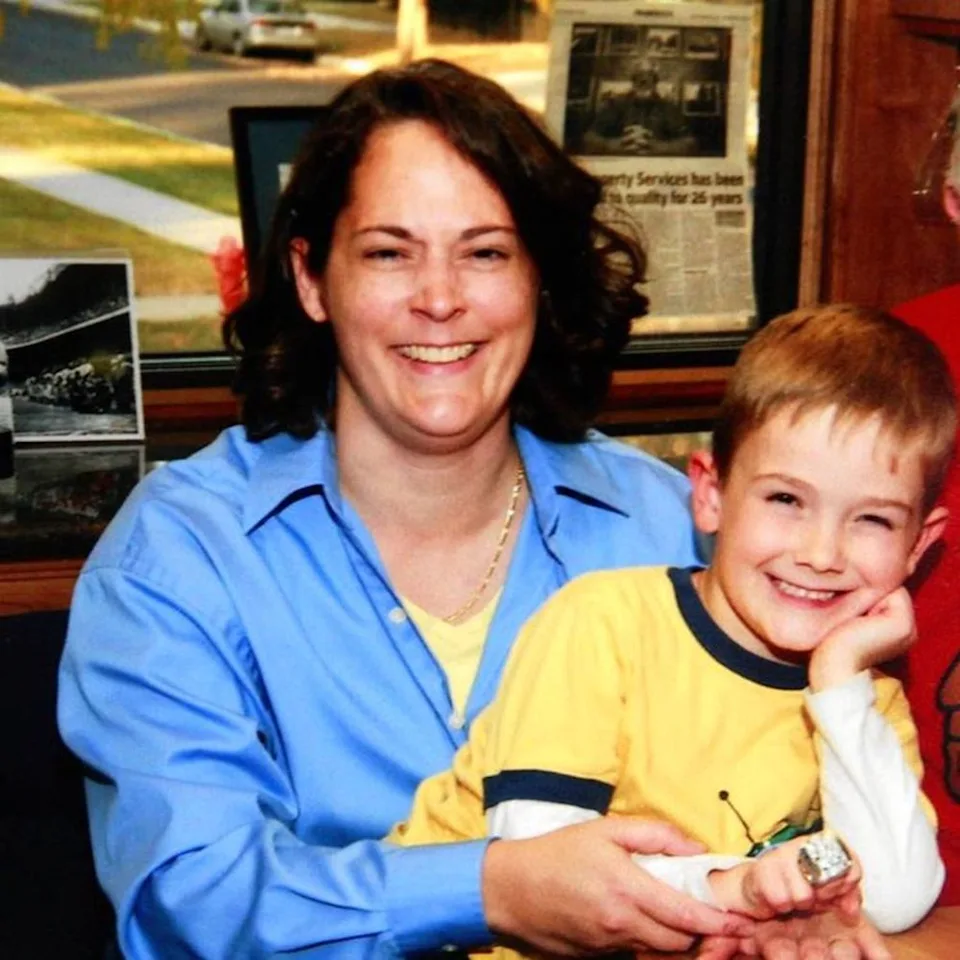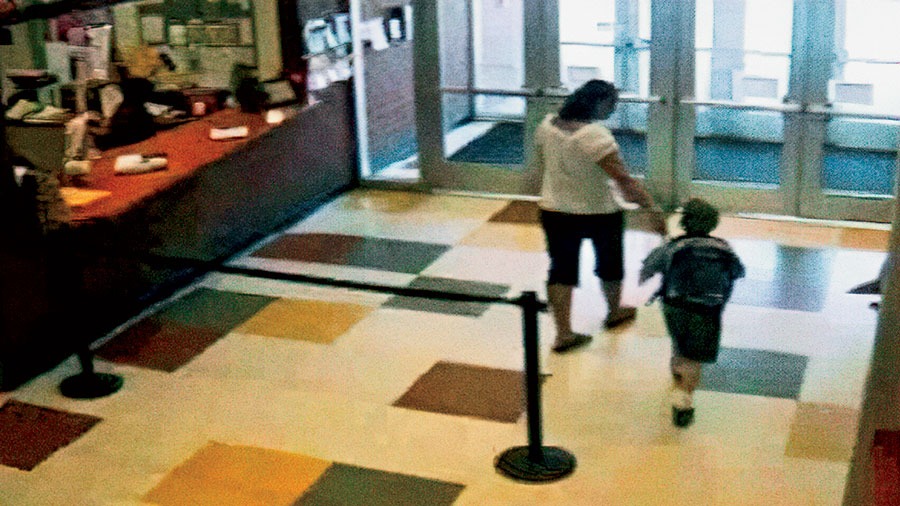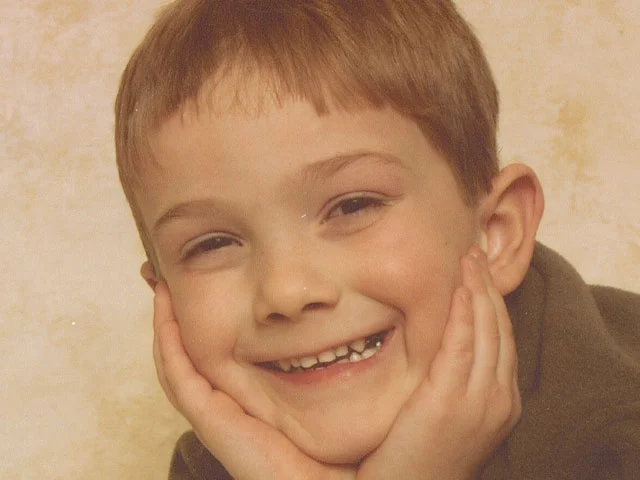Missing: What Really Happened to Timmothy Pitzen?

May 13th, 2011. A six-year-old boy checks out of a Wisconsin water park resort with his mother. Four hours later, she's spotted alone at a grocery store. By morning, she's dead. The note she left behind has kept the FBI searching for over a decade. And the evidence on her car might prove she was lying the whole time.
So there's this moment that defines the entire Timmothy Pitzen case. It happens on a Friday afternoon, May 13th, 2011. A mother and her six-year-old son check out of the Kalahari Resort in Wisconsin Dells. Security cameras catch them leaving together. The boy is carrying his Spider-Man backpack. Four hours later, that same mother walks into a grocery store in Winnebago, Illinois. Alone. And somewhere in those four hours, across a couple hundred miles of rural Illinois highways, Timmothy Pitzen either got placed with people who've kept him hidden for 13 years, or his mother did something so calculated that even forensic scientists are still trying to decode where she stopped her car.
The Setup: When Custody Fear Becomes Action
Timmothy James Pitzen was born October 18th, 2004. Only child. His parents, James and Amy Pitzen, were going through a divorce in 2011. Amy was terrified. We're talking documented mental health history, the kind she was convinced would get used against her in court. Her sister Kara confirmed years later that Amy genuinely believed she was going to lose Timmothy in the custody battle. That fear became the engine for everything that followed.
After Amy died, investigators pulled her electronic records. Turns out she had driven the exact route of what would become their final road trip twice before. Twice. She scouted it. That's a mother planning an extraction with the kind of detail you'd use if you were trying to make something permanent.
Wednesday Morning: The Fake Emergency
May 11th, 2011. Wednesday morning. James Pitzen drops Timmothy off at Greenman Elementary School in Aurora, Illinois, same as always. Normal kindergarten day ahead. Except between 8:10 and 8:15 AM, Amy shows up at the school and checks Timmothy out. She tells school officials there's a family emergency. The emergency doesn't exist. She takes him straight to a car repair shop, drops off their SUV, and has an employee drive them to the Brookfield Zoo. They spend the morning there. Pick the car back up at 3 PM.
Why drop the car off at all? Best theory is she was creating an alibi for the vehicle's mileage and location. If police started tracking her immediately, she wanted a legitimate reason for where the car was and why. That's the level of forethought we're dealing with.
The Three Days: Water Parks and the Appearance of Joy
What happens next looks like a kid's dream vacation. Amy takes Timmothy north. They check into the KeyLime Cove Resort in Gurnee, Illinois that first night. Next day, they drive even further north to Wisconsin Dells, checking into the Kalahari Resort. These are massive indoor water park resorts, the kind where kids lose their minds over the slides and wave pools. Timmothy is having the time of his life, as far as anyone can tell from the surveillance footage.
Friday, May 13th. Morning checkout. Cameras catch them leaving the Kalahari together sometime between 10 AM and 1:30 PM. That afternoon, Amy makes phone calls to family members. During one of those calls, Timmothy talks to his uncle. That phone call is the last time anyone outside of Amy hears his voice.
The Window: Four Hours That Changed Everything
After that phone call, Timmothy Pitzen is never seen or heard from again. The next confirmed sighting is at 8 PM that same evening. Sullivan's Foods in Winnebago, Illinois. Amy walks in. She's alone.
So we've got roughly four to six hours. Wisconsin Dells to Winnebago. A drive that cuts through some of the most rural territory in Northwestern Illinois. And somewhere along that route, Amy either dropped Timmothy off with people she'd pre-arranged to take him, or she stopped the car in a very specific type of location for a very different reason.
At 11:15 PM that night, Amy checks into the Rockford Inn in Rockford, Illinois. Alone. The next morning, a maid finds her body. She had slit her wrists and neck, and overdosed on antihistamines. Next to her body was a note.
The Note: The Statement That Created 13 Years of Questions
The note said she was sorry for the mess she created. And then it said this: Timmothy was safe with people who would care for him, and he would never be found.
Read that again. "Safe with people who would care for him" and "would never be found." Those two statements together create this impossible contradiction that has defined the entire investigation. If the note is true, Amy successfully placed her son with someone who has kept him hidden for over a decade, and her suicide was the final act to make sure nobody could ever force her to reveal where. If the note is a lie, then we're looking at a murder-suicide where the "safe with people" line was designed specifically to keep investigators searching in the wrong direction while her son's body stayed hidden in the one place she knew they'd never think to look.
Timmothy's family, his dad James especially, refuse to believe Amy would have hurt him. James has said repeatedly he believes his son is alive, that someone took him, that Amy gave him to them. And for years, that belief seemed to have some backing.
The Forensics: What the Car Revealed
Police processed Amy's SUV top to bottom. They found traces of Timmothy's blood on the back seat. Forensics determined it was from an old nosebleed. More importantly, they tested the knife Amy used to kill herself. Zero blood from Timmothy on it. If she'd hurt him in that vehicle or handled his body after some kind of trauma, there would be contamination.
That absence of evidence gave the family hope. Then the forensics team at Microtrace in Elgin, Illinois did something that changed the entire investigation. They analyzed the exterior of the SUV. The dirt, the plant material, the sediment on the tires and undercarriage. And what they found was so specific it basically created a geographic fingerprint of the last place Amy stopped that car for any length of time.
The Meadow: A Location Profile So Specific It Might Be Useless
The SUV had stopped on a wide gravel shoulder or gravel road, right off an asphalt secondary highway. The kind of rural road that had been treated with glass road-marking beads at some point, which is pretty specific infrastructure. From that gravel area, the vehicle had backed up into a grassy meadow. Nearly treeless. There were birch and oak trees nearby, and the SUV had stopped away from them.
The grass in this meadow was uncut. The area held no traces of corn or other crops. What they did find were Queen Anne's Lace and black mustard plants growing in a distinct row along the edge of the field, right where it met the road. And there was a strong likelihood of a pond, small stream, or creek somewhere very close by.
Put all that together and you've got an incredibly detailed profile. Microtrace narrowed the location down to Northwestern Illinois, most likely Lee and Whiteside Counties, though they couldn't rule out Carroll, Ogle, Stephenson, or Winnebago Counties. Six counties total.
The problem? Even with that level of detail, the area is way too big to search effectively. You know how many rural gravel turnouts with grassy meadows and small water sources exist across six counties of Illinois? Amy either got incredibly lucky, or she understood exactly what she was doing when she picked that location. A place specific enough to leave forensic evidence, yet common enough across the region that finding the exact spot would be like finding a needle in a field of needles.
What's Missing: The Items That Could Solve Everything
Specific things have never been found. Timmothy's Spider-Man backpack. His toys. A tube of toothpaste Amy bought for him during the trip. If those items turned up in someone's possession, or in that meadow area the forensics pointed to, the case is solved. One way or another.
Amy's cell phone was found in 2013 beside Route 78. Police said it gave them nothing useful. Either the data was scrubbed, or there was never anything on there to begin with. They're still looking for her I-Pass, the electronic toll device. That could tell them exactly which roads she took, which exits she used. Thirteen years later, it's never surfaced.
The Hoax: When Hope Became Cruelty
April 2019. Eight years after Timmothy disappeared. A young man walks up to authorities in Cincinnati, Ohio and says he's Timmothy Pitzen. Says he just escaped from two kidnappers who held him for seven years. The story makes national news immediately. The FBI moves in. For about five seconds, the Pitzen family allows themselves to believe this nightmare might be over.
DNA test comes back. The guy is 23-year-old Brian Michael Rini. Ex-con from Medina, Ohio. Just got out of prison less than a month earlier for burglary and vandalism. When confronted, Rini admits he made the whole thing up. Says he learned about the case from watching a "20/20" special on TV. He had Asperger syndrome and bipolar disorder, and apparently thought pretending to be a missing child was a reasonable plan.
Rini got two years in federal prison for lying to the FBI. The Pitzen family got to experience the emotional equivalent of watching their son die twice.
Brian Michael Rini
Where We Are Now: Thirteen Years of Waiting
Timmothy Pitzen would be 19 years old today. The National Center for Missing and Exploited Children released a new age-progression image in May 2024 showing what he might look like now. James Pitzen still believes his son is alive. On the 13-year anniversary of the disappearance, he released a public message through NCMEC speaking directly to Timmothy, telling him he's never stopped looking.
The case is still active. The FBI is still involved. And the most actionable lead they have is still that forensic report from Microtrace. Six counties in Northwestern Illinois. A gravel turnout. An uncut meadow. A small water source nearby. Queen Anne's Lace and black mustard plants growing along the edge.
The Two Possibilities: Both Terrible in Different Ways
So we're left with this. Either Amy Pitzen successfully orchestrated the most airtight secret placement of a child in modern American history, finding someone willing to raise her son in complete silence for over a decade while the entire country searched for him, or she drove to a carefully scouted location in rural Illinois, killed her son, hid his body somewhere in that environmental profile the forensics pointed to, and then killed herself after writing a note designed to make sure his father would never get closure.
The family believes the first scenario. The forensic evidence and the complete absence of any third party in 13 years of investigation suggests the second. And the only person who knew the truth made absolutely sure she'd take that answer with her.
That's the Timmothy Pitzen case. A mother's fear turned into a three-day road trip. A suicide note that promised both safety and permanent concealment. And a six-year-old boy who walked out of a water park resort one Friday afternoon and never came home. If he's out there, he's 19 now. Old enough to remember his name. Old enough to know something was wrong with the people who raised him. Old enough to come forward.
And if he isn't, then somewhere in Northwestern Illinois, in a meadow that looks like ten thousand other meadows, there's a Spider-Man backpack that could finally answer the question Amy Pitzen's note was designed to make sure nobody ever could.














